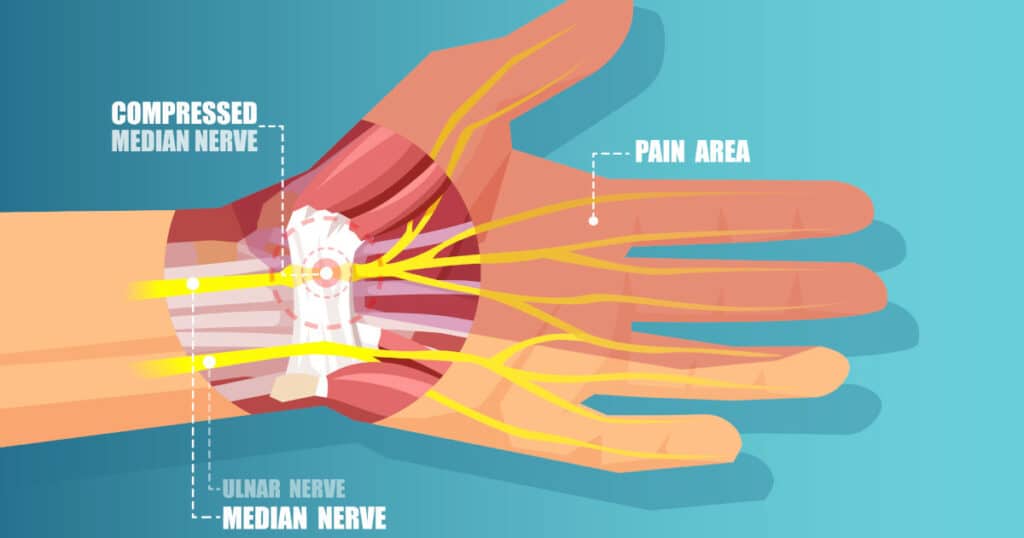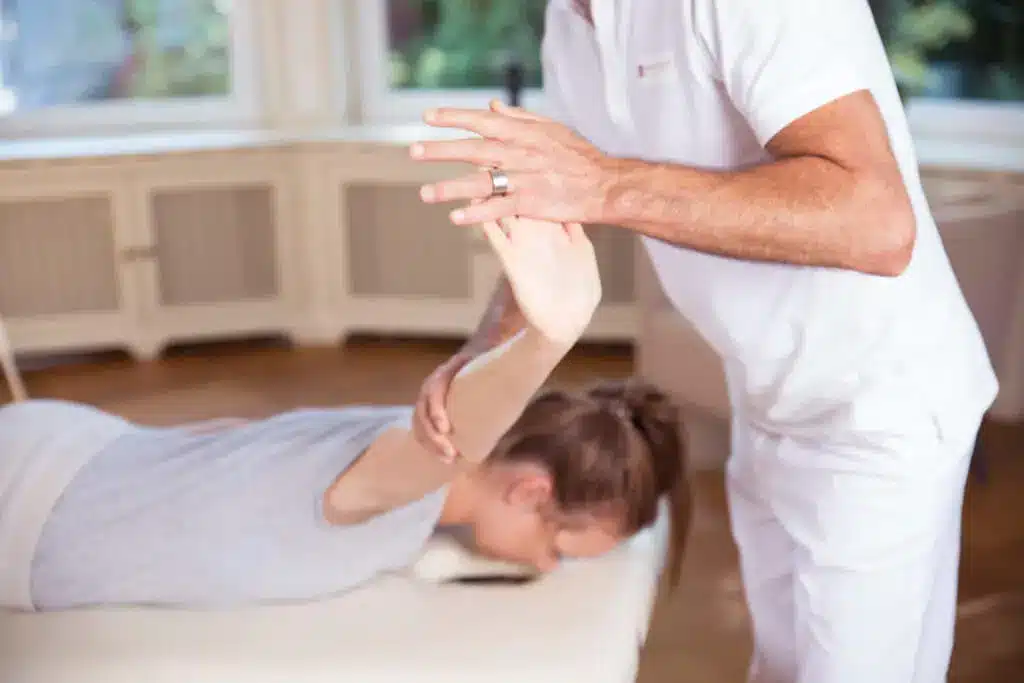Carpal Tunnel Syndrome
The carpal tunnel is a small opening in the wrist bones that tendons, ligaments, and nerves pass through to the hand and fingers. The top of the carpal tunnel is formed by fibrous connective tissue called the carpal ligament (or flexor retinaculum).
One of the nerves passing through the carpal tunnel is the median nerve. The median nerve facilitates movement of the forearm, wrist, hand and fingers and provides feeling to the forearm and parts of the hand.
An injury to or inflammation in the wrist can narrow the carpal tunnel, squeezing the median nerve. A compressed median nerve can cause pain, numbness, or tingling in the wrist, hand, or fingers. Carpal tunnel syndrome does not commonly affect the pinky finger.
Left untreated, CTS can lead to loss of hand function.




